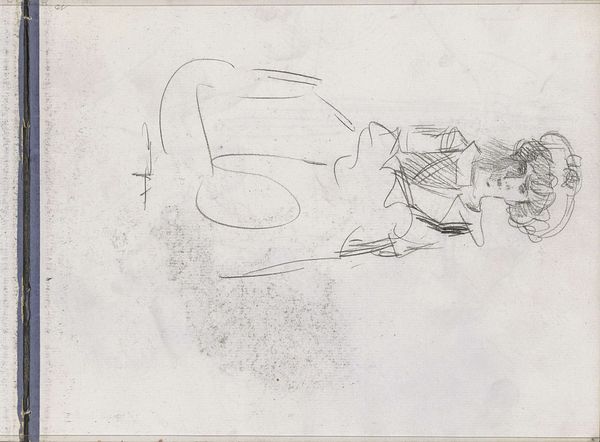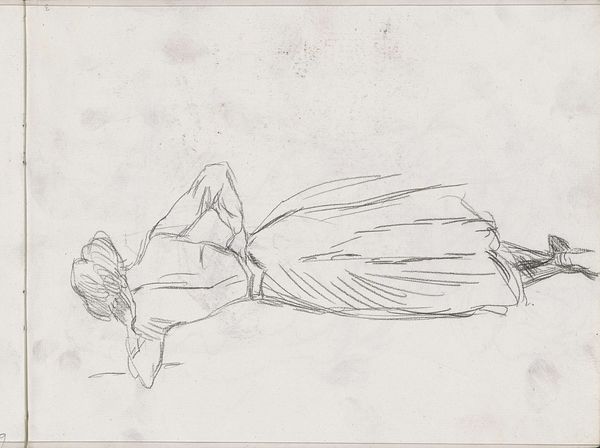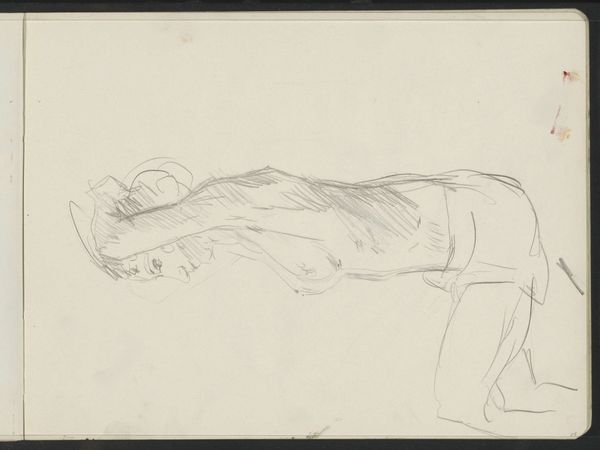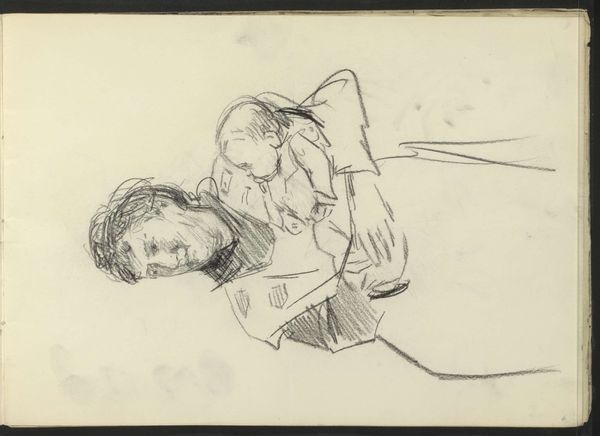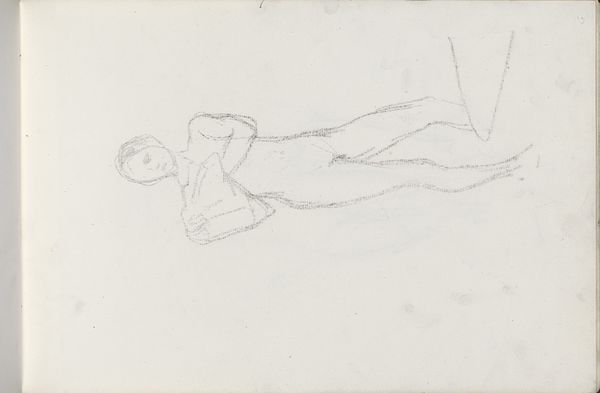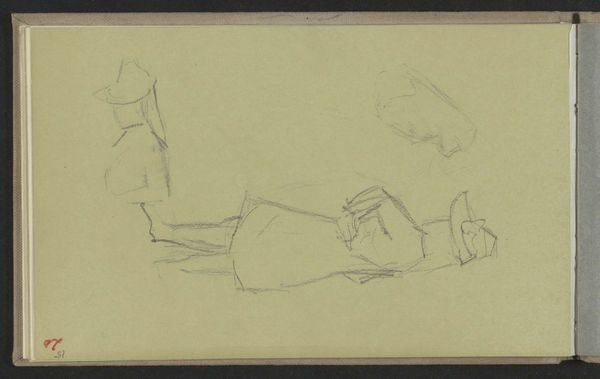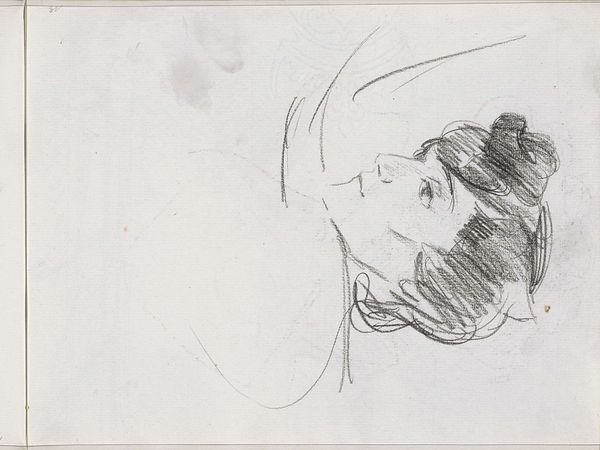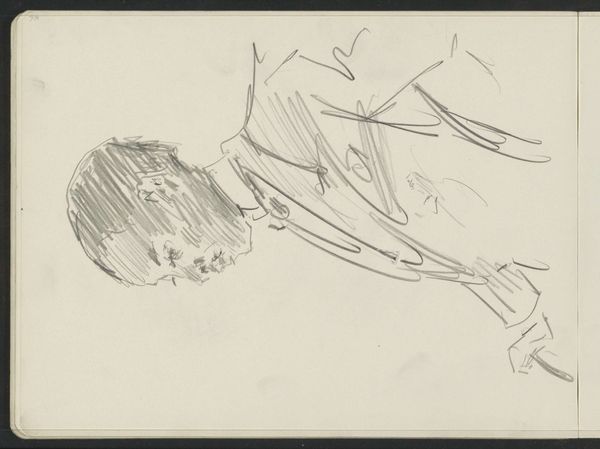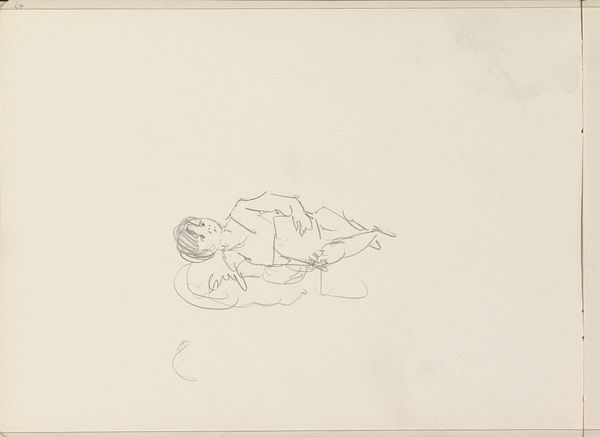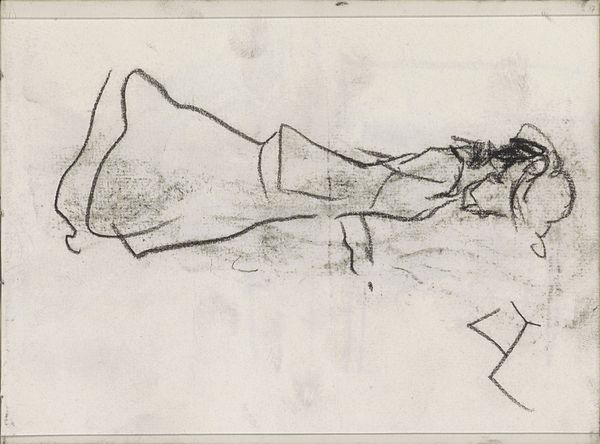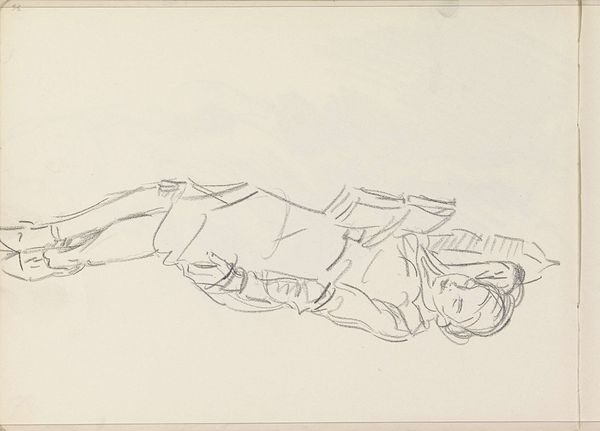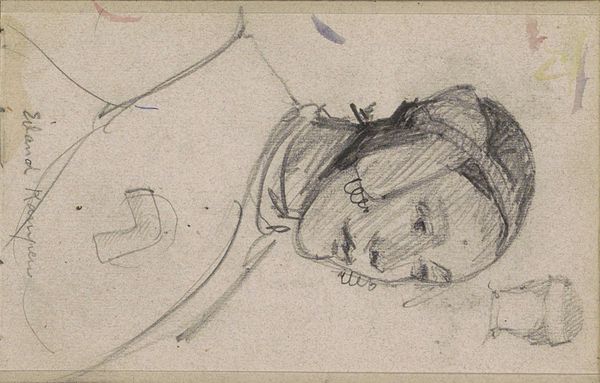
#
amateur sketch
#
imaginative character sketch
#
light pencil work
#
personal sketchbook
#
idea generation sketch
#
sketchwork
#
ink drawing experimentation
#
pen-ink sketch
#
sketchbook drawing
#
initial sketch
Copyright: Rijks Museum: Open Domain
Editor: This is "Standing Woman" by Isaac Israels, made sometime between 1875 and 1934. It looks like a sketch, done in pen and ink. I'm immediately drawn to its simplicity. What can you tell me about it? Curator: Well, considering this "Standing Woman", let's focus on the conditions of its creation and consumption. It's listed as a pen-and-ink sketch, correct? Think about Israels's access to those materials, paper, ink, the time to even produce such a thing. This wasn’t universally available. Who would've owned or consumed this type of artwork, and how does that influence our interpretation of its worth? Editor: That's an interesting perspective! So, rather than focusing on the woman herself, we should consider the availability of artistic materials at that time? It sounds like only a certain class of people had the time and resources to make these initial sketches. Curator: Precisely! Consider the role of the artist as a skilled labourer too. Pen and ink weren't just lying around. There's an entire economy of production and trade that brought those materials to Israels's hand, allowing for this sketch. Is there an influence of his environment showing in his craft? Editor: That's true, I hadn't thought about the actual economics of art-making back then. That puts a new spin on it. Looking closer, it's easy to think about how drawing was part of artistic training - sketches for developing later larger paintings. Curator: Right. What does it mean that we see and value a piece that isn’t the highly-finished artwork displayed for exhibition? Maybe a piece like this would influence what we consider as a fine art piece! Editor: I see what you mean! Considering the materiality really broadens our understanding, revealing so much more about its social and economic context, beyond just the artistic skill. Thanks! Curator: My pleasure! Considering art in that way shifts the focus away from art being strictly aesthetic to including labor, commerce and craftsmanship.
Comments
No comments
Be the first to comment and join the conversation on the ultimate creative platform.
